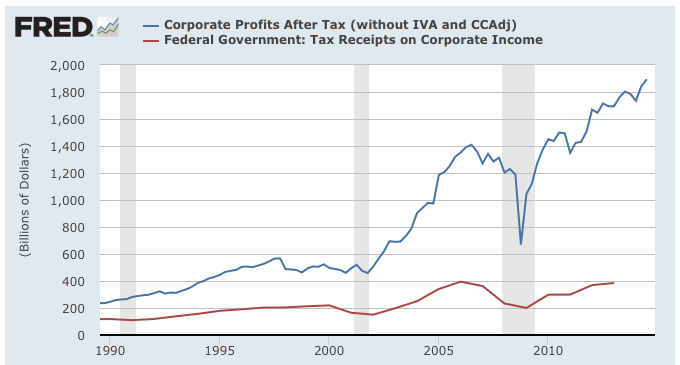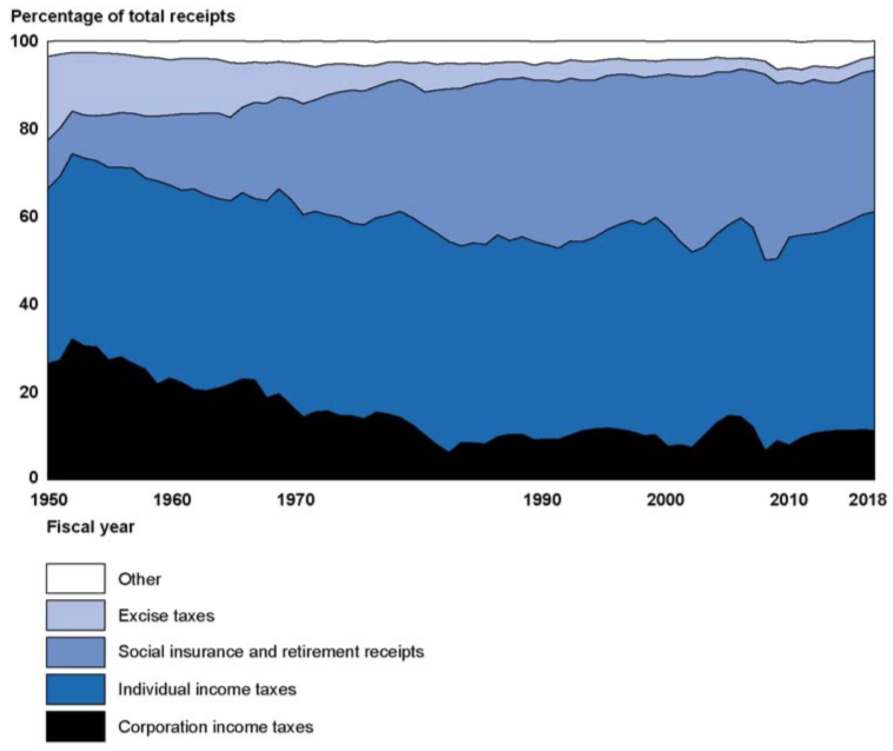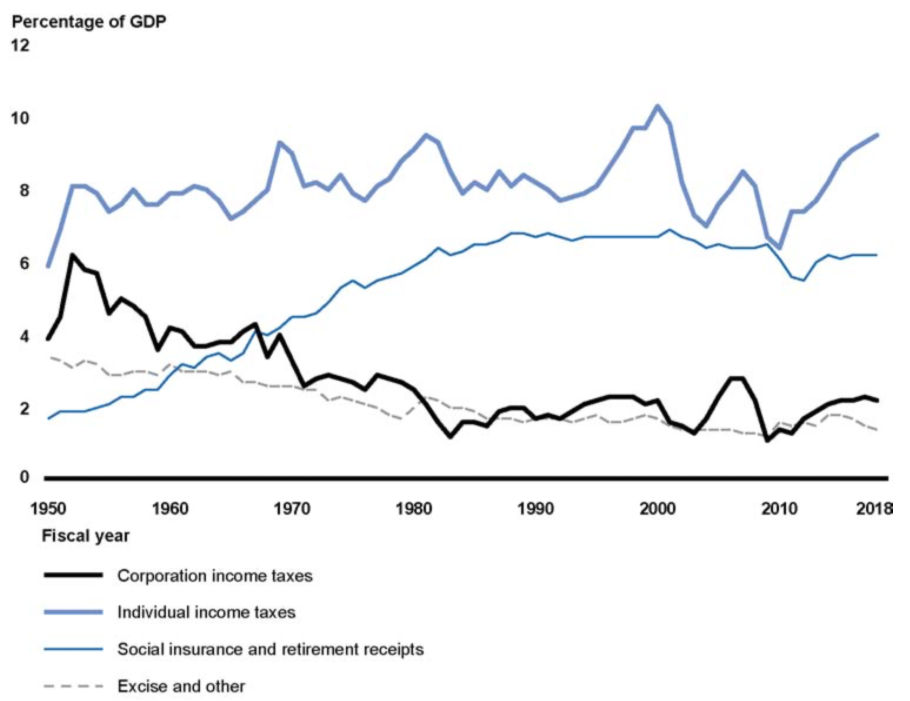This article was last updated on April 16, 2022
Canada: ![]() Oye! Times readers Get FREE $30 to spend on Amazon, Walmart…
Oye! Times readers Get FREE $30 to spend on Amazon, Walmart…
USA: ![]() Oye! Times readers Get FREE $30 to spend on Amazon, Walmart…I have posted on the subject of corporate profits and taxes before, however, in light of the changes in the corporate tax regime proposed by the Obama Administration, the subject is worth revisiting.
Oye! Times readers Get FREE $30 to spend on Amazon, Walmart…I have posted on the subject of corporate profits and taxes before, however, in light of the changes in the corporate tax regime proposed by the Obama Administration, the subject is worth revisiting.
Let's open with a graph that shows both after-tax corporate profits (in blue) and corporate federal taxes paid (in red) since 1990:
Between the fourth quarter of 2007 and the first quarter of 2013, corporate profits rose from $1.314 trillion to $1.694 trillion, an increase of $380 billion. Between the first quarter of 2008 and the first quarter of 2013, corporate tax remissions to Washington rose from $233.7 billion to $384.9 billion, an increase of $151.2 billion.
Here is a graph showing now the difference between after-tax profits and corporate federal taxes remitted has grown since 1990:
In 1990, the difference between after-tax profits and corporate federal taxes was $140.5 billion. This rose to $1.376 trillion in 2013, an increase of $1.236 trillion or 879 percent.
Here is a graph that shows how Federal tax revenues as a percentage of total receipts has varied over the decades since 1950:
Corporate taxes (in black) declined from nearly 30 percent of total federal tax revenues in the 1950s to as little as 6 percent since the 1980s.
Here is another interesting graph that shows how federal tax revenues as a percentage of GDP has changed since the 1950s:
Corporate taxes (in black) have declined from over 6 percent of GDP in the 1950s to 1 percent in 2010.
In its 2016 budget, the Obama Administration is targeting what are termed "indefinitely reinvested earnings or IRE", those earnings by American corporations that are held overseas to avoid paying United States corporate taxes. In case you wondered how much money is held overseas by Corporate America, here is a table from Audit Analytics data that shows how the IRE balances have grown since 2008:
By the end of 2013, U.S. companies in the Russell 1000 (the large capital segment of the U.S. equity market) held a total of $2.119 trillion in overseas earnings, up by 93 percent from $1.098 trillion in 2008. It is also interesting to note that the number of companies using this tax strategy grew from 472 in 2009 to 547 in 2013. As well, as a percentage of total assets, IRE balances have risen from 5.8 percent in 2008 to 8.71 percent in 2013. It is these earnings that the Obama Administration is targeting with its"transition toll charge". The administration has proposed a one-time toll charge of 14 percent on untaxed foreign retained overseas earnings, regardless of whether or not the earnings are repatriated, which would bring in an estimated $238 billion that would be allocated directly to the Highway Trust Fund to be used to repair the badly decaying national transportation infrastructure.
Let's look at a table that shows specific company data on the ten companies with the highest foreign IRE balances for the 2013 tax year and their effective tax rates:
Of course, in all cases, these corporations are functioning wholly within all foreign and United States tax laws. What I found interesting was the fact that, in some cases, foreign retained earnings make up a very substantial part of a company's total assets, as high as 54 percent in the case of Merck and 53.6 percent in the case of Microsoft.
According to the Government Accountability Office, for the 2010 tax year, profitable U.S. corporations paid U.S. federal income taxes (i.e the effective tax rate or ETR) amounting to 12.6 percent of their worldwide pre-tax profits as reported on their financial statements. When foreign, state and local taxes are included, their tax burden rose to an effective tax rate of around 17 percent, less than half the headline federal corporate tax rate. This shows us that the effective corporate tax rate can vary significantly to the downside from the statutory tax rate. As well, according to the Congressional Research Service, while Corporate America likes to complain that the top statutory corporate tax rate of 35 percent is highest in the world, the effective tax rate of only 23 percent is below the weighted average effective tax rate of the six largest OECD economies.
There is a strong corporate lobby in Washington that has the goal of shifting the tax burden away from Corporate American and placing it firmly into the hands (and wallets) of consumers. Unfortunately for voters, it is these same corporations that donate billions of dollars to the campaigns of the politicians who have the power to reduce corporate taxes.
Click HERE to read more of Glen Asher's columns
You can publish this article on your website as long as you provide a link back to this page.







Be the first to comment